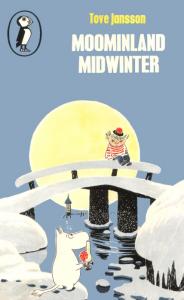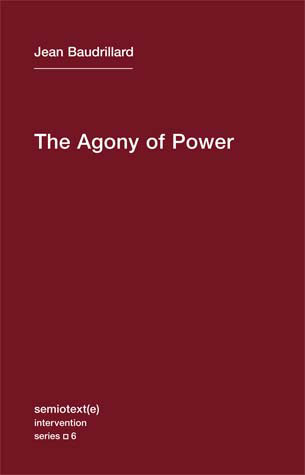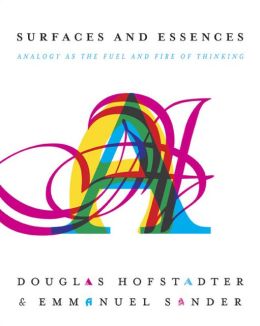The Southern Reach Trilogy chronicles more than thirty years of the attempt to understand Area X, a seemingly pristine wilderness in which strange things are happening. Area X is surrounded by an invisible border with only one point of egress. The Southern Reach, a secret government agency, has been sending in expeditions with varying degrees of failure for decades. Annihilation tells the story of the twelfth expedition into Area X, while the second volume, Authority, functions as an expedition into the Southern Reach itself. The concluding volume, Acceptance, out in September, weaves together perspectives from both Area X and the Southern Reach, under increasingly desperate circumstances.
The series might be a mix of science fiction and conspiracy/spy fiction, but the underlying concepts come out of an intense awareness of our natural landscapes and of our current predicament with regard to global warming. A lot of my "research" meant visiting, revisiting, or remembering landscapes that spoke to me in a way useful for the fiction: St. Marks Wildlife Refuge, Apalachicola, rural Florida and Georgia, Botanical Bay on Vancouver Island, the Pacific Rim of Vancouver Island, and the coast of northern California. I wanted for any details about the natural world in my series to be based on direct observation, rather than received second- or third-hand.
For the real research involved, I have been grateful for ideas encountered in a number of texts, most of them directly rooted in some aspect of the natural world. Here are the top 10, with an honorable mention to the remarkable coffee table book The Seasons of Apalachicola Bay by John B. Stohrer, Jr., which was like a revelation to me while writing Acceptance -- a heartfelt, gorgeous, and wise book that kept me grounded in the places that make the Southern Reach Trilogy personal.
.jpg)
Under the Sea-Wind by Rachel Carson
This was the famous naturalist's first book, and it contains her observations of several coastal environments in the 1930s. Taken just as an intricately detailed account, Under the Sea-Wind has a mesmerizing rhythm that places the reader under a spell. But not only does this book fascinate with its documenting of the lives of animals and the environment around them, it describes pre-World War II landscapes that today do not exist in quite this complexity. This chronicle is thus also an important account of our natural history.

The Sea Inside by Philip Hoare
Whether you're looking for ruminations on whales or what "counter-shading" means in the context of grebes, this series of essays on our relationship to our oceans is incredibly rewarding. Hoare is especially good in describing transitional places that cannot in any way be thought of as "pristine" but that nevertheless continue to shelter animal life. Throughout The Sea Inside, I was also struck by the perfect balance between the personal and the natural world. We cannot separate our lives from that world; we are intertwined with it, and its rhythms. Places have both a human and natural history that communicate one to the other.

Moominland Midwinter by Tove Jansson
This famous Nordic writer might be known for her children's books, but in fact she was a powerful writer of fiction for adults as well (including highly recommended The True Deceiver and The Summer Book). In certain of her Moomin books, the line between what's meant for adults and what's meant for children becomes blurred, and The Moomins in Midwinter is one of those examples. The opening sequence, cloaked in silence and in mystery, is evocative to any reader, and an influence on the tone of parts of my own Acceptance. Her book is extraordinarily still and somewhat unsettling -- and Jansson always writes powerfully of nature, even when it is not her main focus; the natural world permeates her work because it is important to her life.

The Agony of Power by Jean Baudrillard (Semiotext Intervention series)
The Semiotext intervention series is, in my opinion, of critical importance to understanding our modern condition. Baudrillard's thoughts on the pervasive non-reality of our reality are key to finding ways to subvert a system that commodifies all of what it touches. (This blog post included.) Although the natural environment is only a subsidiary element of Baudrillard's concerns, subversion of our current ways of thinking leads inevitably, one hopes, to a better and more sustainable idea of existence within a stable natural environment. His slim volume The Spirit of Terrorism is also well worth reading.

Surfaces and Essences: Analogy as the Fuel and Fire of Thinking by Douglas Hofstadter & Emmanuel Sander
A fascinating text that will at times seem repetitious as similar but not identical concepts are tested in the laboratory in the compartmentalized chapters in this book. The authors' contention that analogy is basically the crux of language, that we cannot think without it, creates ample room for writers to apply lessons learned to change the effects they create in their fiction. While writing my novels, the book certainly helped me to better understand what could be described as a non-human approach to language. But, more importantly, understanding the concepts in Surfaces and Essences leads to thinking about how to re-translate how we talk about the environment and our place in it.

The Book of Miracles
If we want to re-think our position with regard to the natural world, then it's useful to revisit how people before us thought about that world--in this case people in the Middle Ages. In this amazing book, you will find apocalyptic visions of unexplained phenomena; at least, to the people chronicling them. Stunning paintings of comets are juxtaposed with an explanation about the mindset of the time regarding comets, for example. Other images, for example of rains of blood, are Fortean in their appearance, and just as inexplicable to us today. The subtext of The Book of Miracles isn't just that our science is more advanced now and that Medieval mind was different from our own, but that some things remain mysterious.

This Is Not a Program (Semiotext Intervention series)
Here, the anonymous writer mirrors Baudrillard with statements like "Empire is the kind of domination that knows no Outside," which, like much in the book, could be talking about the overlay of the human empire over the natural world. (Even though it is entirely too concerned with the absurdities of human beings.) Along with its soul mate The Invisible Committee: The Coming Insurrection, This Is Not a Program provides a perhaps unintentional nascent roadmap for rethinking our relationship to nature. "Never has a setting been so able to live without the souls traversing it."

The Derrick Jansen Reader edited by Keith Lierre
This collection of excerpts and essays provides a useful introduction to the man's environmental work. Two sections in particular stick with me. In one, he talks about the warring impulses within him when he wakes up in the morning: to go about his usual work or to blow up a dam, having calculating that blowing up dams might in the long-term be more useful. The second consists primarily of a reminder through vivid imagery: That when Europeans reached the New World, it was teeming with wildlife, the air thick with birds and game plentiful. The point being that what we think of as pristine natural environments today are often a shadow of their former selves. While Derrick Jansen has certain prejudices and blind spots of his own, there's no denying the power of his writing about the environment.

Guardian of the Light: Stories of U.S. Lighthouse Keepers by Elinor De Wire
As you might expect for a series of novels featuring a lighthouse, I did visit quite a few lighthouses, including the one here in North Florida, out at St. Marks Wildlife Refuge. But I also read several books on lighthouses, and De Wire won me over with her passion, smart writing, and attention to detail. The book is not just entertainment but has a recurring theme of isolated human beings carrying on in remote locations under sometimes extreme conditions. The relationship of landscape to individuals, what is lost in solitude and what is gained, comes through clearly.

The Sea, The Sea by Iris Murdoch
If you think you might like fiction about a cranky bastard living by the sea who might or might not be hallucinating monsters, then this is the novel for you. The Sea, The Sea is a fitting fictional companion volume to Rachel Carson's Under the Sea-Wind, in that the evocation of landscape is stunning. There is also a synergy with The Sea Inside, in the ways in which the personal and the coastline seem inseparable. The energy of the prose and the profound integrity with which Murdoch follows her character are a bracing challenge to the reader in the best sense.
No comments:
Post a Comment